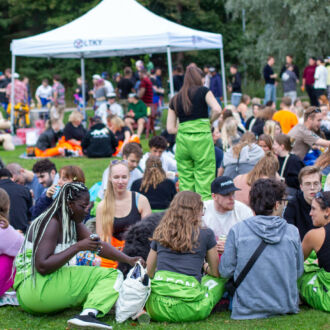You research the impact of climate change on water systems, and you specialise in rivers, from the Finnish far north to the south. Can you tell us a bit about that?
Water systems have always been a presence in my life. I spent my childhood on a farm in Pukkila, southern Finland, and I liked to keep watch on the nearby tributary of Porvoo River. So I started observing nature and the environment almost by chance.
While doing my PhD, I was struck by how little was known about water systems in winter – for example, what happens to sediment transport when a river freezes? Such issues hadn’t been considered in modelling the impact of climate change, because there was hardly any data.
Your research team performs a lot of aerial and underwater photography. Has anything particularly surprising shown up in the pictures?
You do sometimes see elk, reindeer or even a fox [in the aerial images]. And it was great to see a salmon in the underwater photos. But the most impressive thing was when we happened to schedule an autumn shoot at the very moment frazil ice was forming. [Frazil ice refers to tiny ice crystals that can form and accumulate in moving water.] We were able to see how the ice started to form at the bottom of the river. It’s rare to be able to observe and measure a phenomenon in that brief moment.
You like to study cold water – but do you like to go ice swimming?
Before Aalto, I worked at the University of Eastern Finland, in Joensuu, where they have one of the largest ice-swimming clubs in Finland. I used to frequent it quite often.



